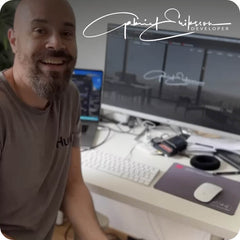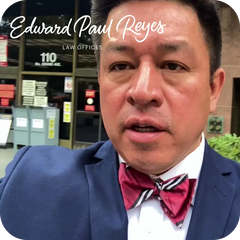Typografia to coś więcej niż tylko litery na stronie; to forma sztuki, która przekazuje emocje, styl i tożsamość marki. Wśród niezliczonych dostępnych stylów czcionek, kursywy i czcionki skryptowe wyróżniają się elegancją i płynnością. Jednak subtelne różnice między nimi mogą być często mylące. Dla grafików, marketerów i kreatywnych profesjonalistów opanowanie tych różnic ma kluczowe znaczenie dla tworzenia atrakcyjnych wizualnie i skutecznych projektów. W tym artykule zbadamy cechy, które odróżniają czcionki kursywne i skryptowe, oferując porady ekspertów dotyczące tego, kiedy i jak używać każdego stylu, aby ulepszyć swoje projekty.
Czym jest pismo kursywne?
Cursive writing is a style of penmanship where the letters are connected in a flowing, continuous manner, designed to enhance the speed and fluidity of writing. Originating from the Latin word "currere," meaning "to run," cursive writing allows for quicker note-taking and a more seamless writing experience compared to print writing, where letters are individually formed. This style is often characterized by its elegant, looping strokes and is traditionally taught in schools to help students develop fine motor skills and handwriting proficiency. Beyond its practical applications, cursive writing is appreciated for its aesthetic appeal and is often used in formal documents, personal correspondence, and artistic calligraphy.
Co to jest czcionka skryptowa?
Script fonts are a category of typefaces designed to mimic the fluidity and elegance of natural handwriting, often characterized by their cursive and calligraphic styles. These fonts are crafted to emulate the strokes of a pen or brush, featuring connected letters and flowing lines that convey a sense of grace and sophistication. Script fonts are widely used in design projects that require a personal or formal touch, such as wedding invitations, branding materials, and decorative elements.
Występują w różnych stylach, od ozdobnych i wyszukanych po proste i stonowane, pozwalając projektantom wybrać idealny skrypt pasujący do tonu i estetyki ich projektu. Chociaż czcionki skryptowe dodają wyjątkowej atrakcyjności wizualnej, muszą być używane w przemyślany sposób, aby zapewnić czytelność i harmonię w ogólnym projekcie.
Cursive vs Script: Jaka jest różnica?
Zrozumienie pisma kursywnego i pisanego
-
Pismo kursywne:
-
Pismo kursywne to styl pisma odręcznego, w którym litery są połączone w płynny sposób.
-
Służy głównie do szybszego pisania i jest często nauczana w szkołach w celu rozwijania umiejętności pisania odręcznego.
-
Cursive is characterized by its elegant, looping strokes and is commonly used in personal correspondence and formal documents.
-
Czcionki skryptowe:
-
Czcionki skryptowe to kroje pisma imitujące płynność pisma odręcznego.
-
Są one przeznaczone dla mediów cyfrowych i drukowanych, oferując szeroką gamę stylów, od ozdobnych po proste.
-
Script fonts are popular in design projects that require a personal or formal touch, such as invitations and branding materials.
Kluczowe różnice
-
Cel i zastosowanie:
-
Cursive to styl pisma odręcznego używany do osobistego pisania, podczas gdy czcionki skryptowe są używane w projektowaniu i typografii.
-
Cursive koncentruje się na szybkości i płynności pisania, podczas gdy czcionki skryptowe kładą nacisk na estetykę w projektowaniu wizualnym.
-
Połączenie listów:
-
W piśmie kursywnym litery są zazwyczaj połączone, aby umożliwić ciągłe pisanie.
-
Czcionki skryptowe mogą łączyć litery lub nie, w zależności od konkretnego stylu i projektu.
-
Medium:
-
Cursive to ręczna technika pisania, podczas gdy czcionki skryptowe to cyfrowe lub drukowane kroje pisma używane w różnych aplikacjach projektowych.
Czy czcionka skryptowa może być kursywą?
Yes, a script font can indeed be cursive. Script fonts are designed to replicate the fluidity and elegance of handwritten text, and many of them incorporate cursive characteristics, such as connected letters and flowing strokes, to achieve this effect. These fonts aim to emulate the natural movement of handwriting, often featuring the same graceful loops and curves found in traditional cursive writing.
Jednak nie wszystkie czcionki skryptowe są ściśle kursywne; niektóre mogą mieć bardziej kaligraficzny styl z rozłączonymi literami lub różnymi szerokościami kresek. Wszechstronność czcionek skryptowych pozwala projektantom wybrać style, które najlepiej pasują do estetycznych i funkcjonalnych potrzeb ich projektu, niezależnie od tego, czy szukają ciągłego przepływu kursywy, czy bardziej uporządkowanego, dekoracyjnego wyglądu.
Jak skutecznie łączyć czcionki kursywne i pisane?
Skuteczne łączenie czcionek kursywnych i skryptowych wymaga wnikliwego spojrzenia na równowagę i harmonię, aby zapewnić, że projekt pozostanie atrakcyjny wizualnie i czytelny. Zacznij od wybrania kursywy lub czcionki skryptowej, która pasuje do tonu i stylu twojego projektu, niezależnie od tego, czy jest elegancki, zabawny czy formalny. Uzupełnij to prostą, czystą czcionką bezszeryfową lub szeryfową dla tekstu głównego, aby zapewnić kontrast i zwiększyć czytelność.
This combination allows the cursive or script font to stand out as a decorative element without overwhelming the overall design. Pay attention to the weight and size of the fonts to maintain a balanced hierarchy, ensuring that the script elements draw attention without overshadowing the main content. Additionally, consider the context and medium of your design, testing the font pairings across different platforms and sizes to ensure clarity and impact.
Jakie są najczęstsze przypadki użycia kursywy i pisma?
Przypadki użycia Cursive
Cursive writing is primarily used in contexts where personal touch and speed are valued. It is a staple in educational environments, where students are taught cursive to enhance their handwriting skills and develop fine motor coordination. This style of writing is also favored in personal correspondence, such as handwritten letters and notes, where the continuous flow of cursive adds a personal and intimate touch. Additionally, cursive is often used in formal documents and certificates, lending an air of tradition and elegance. Its aesthetic appeal makes it suitable for artistic endeavors, such as calligraphy and decorative writing, where the fluidity of cursive can be fully appreciated.
Przypadki użycia skryptów
Script fonts are versatile tools in the world of design, offering a wide range of applications that capitalize on their elegant and decorative nature. They are particularly popular in the creation of wedding invitations, greeting cards, and event programs, where their sophisticated appearance enhances the formality and beauty of the occasion. In branding and marketing, script fonts are often used to convey a sense of luxury and refinement, making them ideal for logos and brand identities that seek to stand out with a personal and artistic flair. Additionally, script fonts are employed in various digital and print media, from advertisements to packaging, where their unique style can capture attention and communicate a brand's personality effectively.
Typowe błędy, których należy unikać w przypadku czcionek kursywnych i skryptowych
-
Overuse in Large Blocks of Text: Cursive and script fonts can be difficult to read in large paragraphs due to their intricate and flowing nature. It's best to use them sparingly for headings, titles, or short phrases to maintain readability.
-
Poor Contrast with Backgrounds: Ensure there is sufficient contrast between the font color and the background to enhance readability. Light script fonts on light backgrounds or dark fonts on dark backgrounds can make the text hard to decipher.
-
Inappropriate Font Pairing: Pairing cursive or script fonts with incompatible typefaces can disrupt the visual harmony of a design. Choose complementary fonts that balance the decorative nature of scripts without clashing.
-
Using Too Many Styles: Mixing multiple cursive or script fonts in a single design can create a chaotic and unprofessional appearance. Stick to one script style per project to maintain a cohesive look.
-
Ignoring Readability on Digital Platforms: On digital screens, especially smaller ones, cursive and script fonts can become illegible. Always test your design on various devices to ensure the text remains clear and accessible.
Wnioski
Podsumowując, zrozumienie różnic między czcionkami kursywnymi a skryptowymi jest niezbędne dla każdego, kto zajmuje się projektowaniem, brandingiem lub projektami osobistymi, które wymagają odrobiny elegancji i osobowości. Podczas gdy pismo kursywne jest zakorzenione w tradycyjnym rzemiośle pióra z jego ciągłymi, płynnymi literami, czcionki skryptowe wprowadzają tę płynność do sfery cyfrowej, oferując szeroką gamę stylów do różnych zastosowań.
Rozpoznając unikalne cechy i odpowiednie przypadki użycia każdego z nich, projektanci i entuzjaści mogą podejmować świadome decyzje, które poprawią estetyczne i funkcjonalne aspekty ich pracy. Niezależnie od tego, czy chodzi o stworzenie osobistego listu, zaprojektowanie zaproszenia ślubnego, czy też opracowanie tożsamości marki, przemyślane zastosowanie czcionek kursywnych i skryptowych może podnieść efekt wizualny i przekazać pożądany komunikat z wyrafinowaniem i jasnością.
Przemyślenia końcowe
Are you looking to distinguish your brand with the elegance of cursive and script fonts? At Artlogo, we specialize in creating unique branding elements that not only enhance your business's image but also ensure its security. Explore our sophisticated Pomysły na odręczne podpisy, stylish digital business cards, and striking social media icons - we even have our own free signature creator. Each design is meticulously crafted to captivate your audience and elevate your brand's presence. Experience the Artlogo advantage and boost your visibility in the legal industry today.

























Share to: